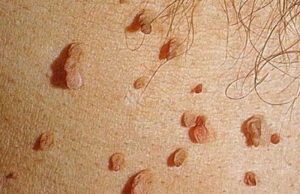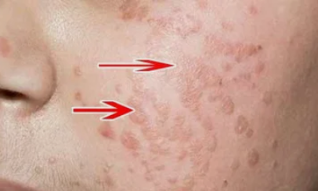
Human papillomavirus (HPV, HPV-human papillomavirus) or papillomavirus is a group of infections that includes more than 100 types of viruses, 80 of which are pathogenic for humans. According to statistics from the World Health Organization, 70% of the world's population are carriers of HPV. In most cases, the infection occurs after the start of sexual activity and can be asymptomatic for a long time.
Causes of HPV infection
Symptoms of papillomavirus infection in women can be: various types of warts, flat and genital warts, cervical dysplasia. However, the most dangerous manifestation of pathology is the development of cervical cancer. There is also evidence linking the development of cancers of the anus, external genital organs, vagina with infection by certain types of human papillomavirus (type HPV 16, 18, 45, 56).
Transmission paths:
- Sexual contact.It is the main route of transmission of human papillomavirus infection. Using a condom during sexual intercourse significantly reduces the risk of human papillomavirus infection; however, it does not provide a reliable guarantee that infection will not occur, as the viral particles are very small in size.
- Home contact path.The causes of infection are the use of intimate joint hygiene products: towels, soap, use of public toilets, bathroom.
- Natural delivery.HPV can be passed to children who become infected when a child passes through the birth canal of an infected woman.
The source of this infection is the patient's skin cells and mucous membranes. In this case, a person may not know that they have become a carrier of the virus, as warts and papillomas can be microscopic in size and remain invisible during visual inspection.
Predisposing factors that contribute to the development of a viral infection:
- the beginning of sexual activity at an early age;
- promiscuous sex without using a condom;
- frequent abortions;
- the presence of infectious diseases of the genital organs;
- prolonged use of oral contraceptive methods;
- decrease in the body's immune response;
- breach of the rules of personal hygiene;
- if the sexual partner has HPV;
- exposure to frequent stressful situations;
- bad habits.
Through pores, cracks, microtrauma of the skin and mucous membranes, the virus penetrates the basal layer of the epithelium, which ensures normal growth and renewal of the skin and mucous membranes. The DNA (deoxyribonucleic acid) of the cells of the basal layer carries information about the healthy structure of the cells. A viral particle, when incorporated into DNA, changes this information, resulting in the formation of affected cells that, in the process of growth and division, cause symptoms of the disease.
Symptoms of Human Papillomavirus Infection in Women

One of the possible manifestations of human papillomavirus infection is the appearance of genital warts and papillomas. They are specific formations that have the appearance of cauliflower, bunch of grapes or cockscomb, pinkish red or flesh colored. Depending on the type and type of virus, they can infect a person's skin and mucous membranes.
Genital warts can form around or near the anus, especially if there is anal intercourse.
Papillomas can appear on the skin around the fingers and toes, hands, around the eyes, armpits, and scalp. Sometimes they also form on the soles of the feet and cause a characteristic pain when walking.
This type of disease rarely degenerates into a malignant tumor and cancer, however, to prevent the development of the disease, the formations are surgically removed.
Consequences of HPV infection
Human papillomavirus in women can cause significant growth of genital warts, papillomas, and flat warts, which will cause a feeling of discomfort, pain, and when injured, bleeding of varying severity can occur.
HPV types 18 and 16 are the most dangerous, as they lead to the development of cancer. Cervical cancer, which has been reliably linked to human papillomavirus infection, ranks second among several malignant diseases in women. The mortality rate reaches fifty percent.
Flat warts

The disease is characterized by the formation of flat plaques that practically do not rise above the level of the skin.
Very often, the mucous membrane of the vagina and cervix is affected.
The cosmetic defect with them is much less than with genital warts.
This type of pathology has a higher risk of degeneration into cancer.
Dysplasia of the mucous membrane of the cervix
Pathology is a change in the normal structure of the cells of the mucous membrane of the cervix, which is called atypia. This condition in gynecology is considered precancerous and requires intensive observation and treatment.
In most cases, the disease is asymptomatic and detected by a gynecologist during a routine examination. Dysplasia of various degrees of severity is distinguished: mild, moderate, severe. The choice of treatment method depends on the severity.
Cervical Cancer
This is the most dangerous manifestation of the disease. Cervical cancer ranks second among tumor pathologies in women and is associated with infection by HPV types 16, 18.
The disease can continue without clinical signs or is manifested by nonspecific symptoms: weakness, increased fatigue, weight loss, appearance of vaginal bleeding outside the menstrual cycle.
Disease treatment methods
If there are signs of HPV infection, given the danger of the consequences, do not self-medicate.
In order to choose the optimal treatment tactics, it is necessary to consult a gynecologist, who, after a thorough examination and conducting the required tests, will prescribe the appropriate therapy.
Until now, no drugs have been invented that will cure HPV forever. The main goal of treatment is to reduce the concentration of the virus in the body to prevent further progression of the disease.
Main therapy areas:
- treatment of manifestations (warts, papillomas, dysplasia);
- antiviral therapy;
- the use of funds intended to increase immunity.
In the presence of papillomas, genital warts, warts, areas of dysplasia, even small in size, it is recommended to remove them, since the presence of neoplasms increases the concentration of viral particles in the woman's body, which contributes to agreater progression of the pathology.
Surgical treatment
The methods to remove genital warts, papillomas, warts and dysplasia are as follows:
- surgical;
- cryotherapy;
- diathermocoagulation;
- laser coagulation;
- radio wave therapy;
- chemical attack.

The surgical method consists of removing the growths with a scalpel, it is the most economical treatment method, however, after it there is a pronounced cosmetic defect and the healing period is significantly lengthened. There is also the risk of a secondary infection. Therefore, this type of intervention is used in extreme cases.
During cryotherapy, liquid nitrogen is applied to the affected area, freezing the pathological formation. After a few days, the papilloma or condyloma disappears and a small wound forms under it, which heals in 10-14 days.
Diathermocoagulation is the application of high temperatures to affected areas of the skin. This procedure is quite painful and therefore requires anesthesia. The disadvantage of this method is the formation of rough scars rather than pathological formations.
During laser coagulation, the impact of laser beams on the affected area leads to desiccation of the neoplasms. In its place a dry scab forms, which after a while disappears without scarring. This type of treatment is the gentlest, but its high cost is considered a disadvantage.
Radio wave therapy is the effect of radio frequency waves on the affected area. When using this type of treatment, there are no risks of bleeding, no pronounced scars are formed, but the disadvantage is the high cost.
The chemical method is used when there is a small formation. A special medicine is applied to the affected area. After several applications, a scab forms on the treated area, which disappears after a few days.
Drug use
Drug therapy for human papillomavirus infection includes the use of the following groups of drugs:
- antiviral medications;
- immunostimulants.
To reduce the concentration of the virus in a woman's body and prevent its further reproduction, a long course of antiviral therapy is prescribed. Medicines are used in the form of tablets and suppositories, the dosage and duration of the course of treatment should be determined only by the attending physician.
Immunostimulants are prescribed after analysis and detection of a reduced level of immunity to increase the body's defenses, accelerate the appearance of immune cells, and stimulate the production of antibodies intended to fight the virus.
Treatment of HPV infection in pregnant women
The presence of a human papillomavirus infection in a woman's body does not affect the reproductive system and is not a contraindication for pregnancy. If an exacerbation of HPV occurs during pregnancy, therapy for this condition is not carried out during this period, treatment is prescribed after delivery.
However, a woman should be monitored by a doctor throughout her pregnancy. With the development of severe discomfort, gentle methods of therapy are prescribed. In extreme cases, when there are contraindications to vaginal delivery due to HPV progression, a cesarean section is performed.
Get rid of HPV with home remedies
At home, you can use home remedies such as decoctions and herbal infusions, for the treatment of papillomatosis, ointments, to get rid of the resulting warts, papillomas and warts.
Ways to prepare decoctions and infusions for the treatment of human papillomavirus infection:
- Horsetail, nettle, rose hips, dandelion roots, and banana leaves are mixed in equal amounts. At the 3rd. l. Add 800 ml of water to the resulting mixture, simmer for 10 minutes, then steep for 3 hours. Apply 1 glass 3 times a day 30 minutes before meals.
- Oregano herb, yarrow, immortelle, St. John's wort, birch buds, nettle, calendula, colt's foot, burnet roots, chamomile flowers, yarn, banana leaves, celandine, linden flowers, seeds ofcaraway and sage are mixed in equal amounts. Pour 2 tablespoons into a thermos. l. the resulting mixture, pour 500 ml of boiling water, leave to infuse overnight. Take 0. 5 cups 4 times a day.
- Valerian root, lemon balm, oregano, linden flowers, hop cones, motherwort are mixed in equal amounts. Pour 1 tablespoon into a thermos. l. the resulting mixture, pour 0, 5 liters of boiling water and leave to infuse for 3-5 hours. Apply 250 ml 2 times a day.
For the treatment of local manifestations apply:
- Celandine juice. The juice is made from fresh leaves or purchased at a pharmacy. Before applying the product, the skin of the affected area should be vaporized and the healthy areas near the affected area should be treated with an oily cream. Celandine should be applied carefully to the affected skin. The procedure should be repeated every other day for a week until the pathological formation disappears.
- Garlic. The vegetable should be grated on a fine grater and mixed with skin cream until a slimy consistency is formed. Apply the resulting mixture to areas of formations for 2-3 hours every day for a month. After the procedure, wash your skin with soap and water.
- Young walnuts. They need to be crushed with a meat grinder, pour the resulting mixture into a 0. 5 liter glass jar to fill 2/3, pour the rest of the container with kerosene. Let stand for 20 days, then strain with cheesecloth. Infusion to treat the affected skin 2 times a day.
After therapy and getting rid of the external manifestations of HPV, a woman should visit a gynecologist every six months to monitor and prevent further progression of the disease.














































































